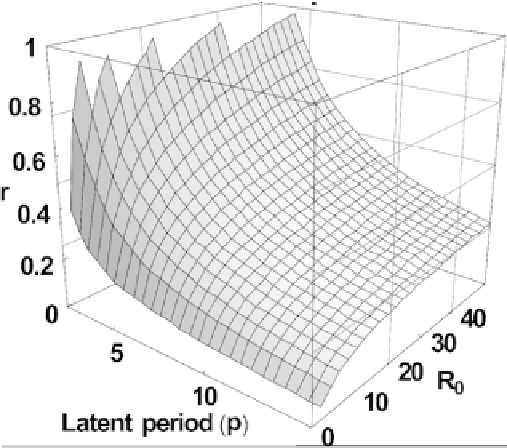Agriculture Reference
In-Depth Information
systemic fungicides only, may affect
R
0
by killing entire individual mycelia, by
reducing the spore production or the length of time for which spores are produced,
or by lengthening the latent period. Protectant activity, no matter how effective, will
allow latent infections to grow. For disease with high
r
but fairly long latency, with
an incubation period (Butt and Royle, 1980) similar to the latent period, this implies
considerable increase in disease severity after the application of fungicide.
Figure 7.1. The relationship between the intrinsic rate of increase of a disease
, r
, the basic
reproductive rate
R
0
, and the generation time
p
. The time-units for
r
and
p
are the same. For
a disease that reproduced slowly, they might be in years
-1
and
years; for a faster disease, they
might be in days
-1
and days. Control actions which reduce
R
0
by a fixed proportion will work
best if
R
0
is already small; those which increase
p
by a fixed proportion will work best if
p
is
small.
Systemic fungicides, such as the azole group or the phenylamides, may have both
eradicant and protectant effects. They may kill a proportion of established and
growing pathogen individuals, they may prevent a proportion of new infections by
interfering with infection processes or germination and they may lengthen latent
periods, in some cases very dramatically. This means that they may be able to work
better on diseases with high rates but long latent periods, because the latent disease
will actually be eliminated to some extent. It will still be true that, if
R
0
is large,
changes in
R
0
will have only slight effect on
r
. However, if latent periods of
surviving pathogen individuals are lengthened, the control at any given actual time
will be better than with the protectant, because fewer latent periods will have passed.


